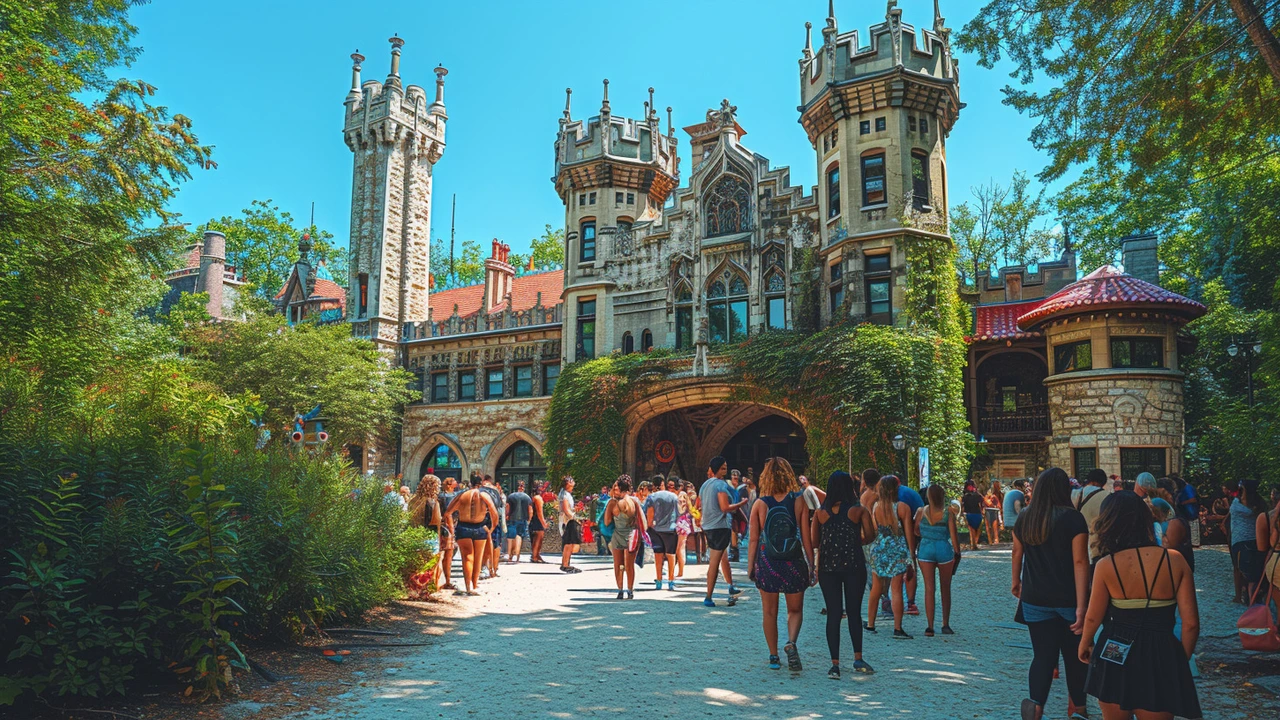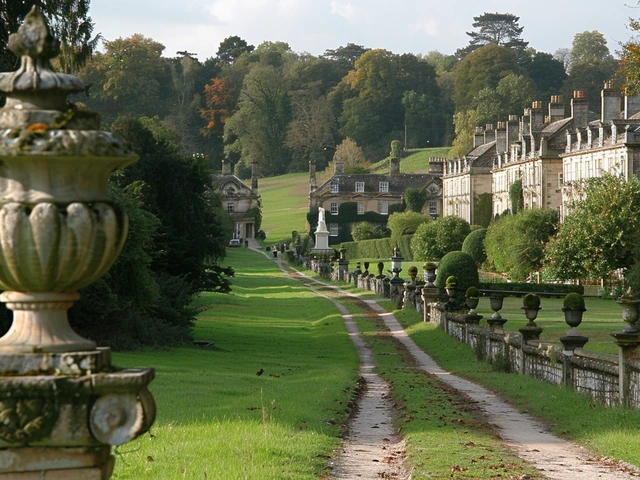Introduction to Gothic Revival Architecture
As your resident architecture-obsessed blogger, today, I find myself drawn to a particularly dramatic and visually arresting style: Gothic Revival architecture. When I say 'Gothic Revival', don't be quick to associate this with dark, brooding castles fit for Dracula. No, this architectural style that originated from the mid-18th century in Britain is much more than that; it's a celebration of overwhelming grandeur and an awe-inspiring expression of emotion through the medium of stone and mortar.
This style, which evolved as a reaction against the industrial innovation of the time, seemed to hark back to a romanticized past, filled with chivalry and medieval tradition. Its influence soared during the 19th century, impacting Britain, Europe, North America, and even Australia, resulting in some of the world's most phenomenal structures. As someone with a hearty appreciation for architecture and a soft spot for the dramatic, who could resist this architectural time machine that propels us back to an alluring past?
Key Features of Gothic Revival Style
Before heading any further down this bricked road, let's familiarize ourselves with some trademark elements that define Gothic Revival architecture. High, pointed roofs; ornamented and intricate facades; large, imposing towers and spires; arched windows, and often, features seen in a religious context, such as stained glass. There's a long-standing myth that the pointed arches were designed so to make the buildings seem closer to Heaven - which speaks volumes, doesn't it? Every curve, every line, every vault in this style seems to point upwards, towards a divine realm, creating a sense of wonder and majesty.
These buildings, despite their intimidating exterior, are often filled with an abundance of natural light which streams through the stained windows as if each beam of light carries an ethereal quality. The experience of exploring such a structure can often be likened to a symphony, with crescendos of emotions reaching a fever pitch.
Decoding the Symbolism
In Gothic Revival architecture, every stone speaks, every arch has a story, and each spear of the spire is a metaphor reaching towards the heavens. The primary aim of this style was not only to marvel the viewer but also to educate and inspire. Many Gothic Revival churches, for instance, are filled with symbolic references to Christian faith, from the ornate designs on doors to the placement of the choir - everything is drenched in layers of deep, profound symbolism.
On a more personal note, one of my favorite aspects of this architecture style is its ability to weave a tale through its structure. I remember visiting the Stone Chapel at my alma mater, which is an adorable example of Gothic Revival architecture. As a student, I would often lose myself amidst its intricate stone-work, the artistry in each arch, each window, transported me back to a time I could only imagine in my wildest dreams. Of course, this was during a pre-examination study session - you could say, the building offered me a more appealing alternative to thermodynamics!
Distinctive Elements of Interiors
Moving on from my personal anecdotes, a classic trait of Gothic Revival architecture is its incredibly ornate and detailed interiors. The distinguishing interior feature was the usage of vertical space - tall, slender columns gracing high, arching ceilings. Spaces braced with stone-ribbed vaults, frescoes, murals, and, quite essentially, colored glass windows. These designs were an indication of the influence of religious architecture.
The interiors often evoke a sense of spiritual transcendence, with their high ceilings creating an almost ethereal experience. They are filled with elegant stone-work and intricate wood carvings, a testament to the artistic prowess of the craftsmen of the era. Just picture walking into a grand cathedral, with the sunbeams filtering through the stained glass, casting multicolored shadows that dance amidst the sturdy columns - it's nothing less than a spectacle. It's no wonder that many individuals find themselves losing track of time in these architectural marvels.
Iconic Examples of Gothic Revival Architecture
Many well-known landmarks around the world are stunning embodiments of Gothic Revival architecture. These include structures like the Houses of Parliament in the UK, the University of Chicago in the US, the Parliament Buildings of Canada, and St. Patrick's Cathedral in Australia. Each of these structures is synonymous with an identity, engendering a civic pride that remains undiminished by the passage of time.
Even today, they stand as mute witnesses to their times, their stones imbued with history, the echoes of the era they represent still resounding in their walls. The mere sight of these edifices fills up the onlooker with an overwhelming sense of awe and admiration. Let's admit it, who wouldn't be mesmerized by the intricate detailing on the Big Ben tower, for instance, or the formidable grandeur of St. Patrick's Cathedral?
Impacts and Influences of Gothic Revival
Gothic Revival architecture was a style that expanded beyond just building design. It had a far-reaching influence on interior décor, arts, and crafts of the era, and even furniture design. This aesthetic influence can be seen in Victorian homes, filled with high, towering bedposts, intricate woodwork, stained glass decorations, and artwork inspired by medieval legends. It's a versatile style that transcended beyond national boundaries, finding favor in various parts of the world.
Not just this, Gothic Revival was a movement that echoed a growing interest in medievalism and Romanticism among the scholars and the literati of the time. It was more than an architectural style - it was an aesthetic ethos, a cultural movement, that stirred the hearts and minds of the generations.
Gothic Revival Today: A Continuing Legacy
While the prominence of Gothic Revival architecture might have dipped with the arrival of modernism in the early 20th century, its legacy continues to shine bright. Many preservation societies around the world are dedicated to the cause of preserving these architectural gems, continuing the dialogue between the past and the present. As such, these captivating structures continue to attract tourists, historians, and architecture enthusiasts alike, continuing to weave their timeless spell.
From grand public buildings to intimate chapels and from historic landmarks to far-reaching aesthetic influences, Gothic Revival architecture remains an enduring testament to the human quest for beauty, grandeur, and spiritual transcendence. As an architecture enthusiast or even as a curious observer, delving into the world of Gothic Revival architecture is akin to embarking on a fascinating journey into the pages of history.





Leave a Comments